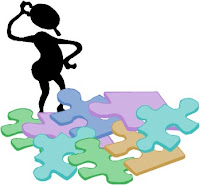We had an interesting topic today in the class that is Problem solving and decision making. Both are considered as very important tools in implementing certain ideas and to form a conclusion o fthe decisions.
so lets start
What are the steps involved in solving a problem?
Problem solving:
Now, unless we know that a problem exists we cannot convert it into an opportunity. Hence, the first and the most important step in Problem Solving is identifying the problem in the first place because if the problem is one and we are toiling hard to solve it assuming that it is something else wont bear any fruits. Accordingly, we use generic methods in an orderly manner, for finding solutions to problems.
Decision making:
Decisions can be made in two ways:
(a) Individually
(b) In a Group.
Individual Decision making is extremely fast and simple. It depends on the structure of the organization. However, the basic problem with Individual Decision Making is that is tends to be partial. There can be severe bias in the process.
Group Decision Making is a more organized and methodical process of solving problems than Individual Decision Making. This is because, in Group Decision Making, a problem is everyone's and not just of the one person who is making the decision. Hence, the group gets a variety of different perspectives on the problem and the probable solutions for the same.













.jpg)
